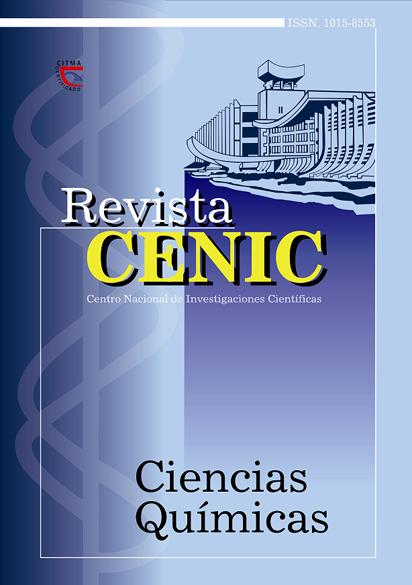Advances in catalyzed enin cycloisomerization by transition metals
Abstract
Enynes are molecules containing, at least, one double and one triple bond, which can be expatiated or
substituted or both. These instaurations can be separated by a heteroatom. Enynes reactivity allows anticipating the
development of new interesting molecules for fine and pharmaceutical chemistry. Metal-catalyzed cycloisomerization
reactions of 1,n-enynes have appeared as conceptually and chemically highly attractive processes as they contribute to
the atom economy and allow the discovery of new reactions and products. Since the pioneering studies with palladium
by the research group of Barry Trost in the mid-1980s, other metals have been identified as excellent catalysts for the
rearrangement of 1,n-enyne skeletons. Moreover, the behavior of 1,n-enynes may be influenced by other functional
groups such as alcohols, aldehydes, ethers, alkenes, or alkynes. On the other hand, the increasing demand of optically
active compounds has activated the studies of metal-catalyzed asymmetric reactions, in which chiral ligand plays a fundamental
role. An abundant optically active molecule group found in the nature contains a high carbon and heterocycles
functionalization. These important structural aspects are frequently absolutely essential for the biological activity and
the function. There is a great number of ligands that help to induce asymmetry in diverse chemical reactions. This review
is focused to highlight the main contributions in this field of catalysis and the enynes cycloisomerization reaction
mechanisms catalyzed by rhodium, platinum and gold.

Downloads
Published
How to Cite
Issue
Section
License

This work is licensed under a Creative Commons Attribution-NonCommercial-ShareAlike 4.0 International License.
Los autores que publican en esta revista están de acuerdo con los siguientes términos:
Los autores conservan los derechos de autor y garantizan a la revista el derecho de ser la primera publicación del trabajo al igual que licenciado bajo una Creative Commons Atribución-NoComercial-CompartirIgual 4.0 que permite a otros compartir el trabajo con un reconocimiento de la autoría del trabajo y la publicación inicial en esta revista.
Los autores pueden establecer por separado acuerdos adicionales para la distribución no exclusiva de la versión de la obra publicada en la revista (por ejemplo, situarlo en un repositorio institucional o publicarlo en un libro), con un reconocimiento de su publicación inicial en esta revista.
Se permite y se anima a los autores a difundir sus trabajos electrónicamente (por ejemplo, en repositorios institucionales o en su propio sitio web) antes y durante el proceso de envío, ya que puede dar lugar a intercambios productivos, así como a una citación más temprana y mayor de los trabajos publicados (Véase The Effect of Open Access) (en inglés).













